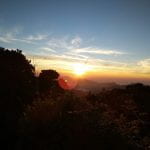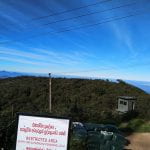Last Week Without Walls
Highlands

Taken by Mr. Locking using slow shutter speed and lighting from the students
Week Without Walls is one of the souvenirs of my IB Diploma journey because it’s the only week in which I was away from school and from my regular IB classes. For my last year for Week Without Walls, I was lucky enough to be selected for ‘Highlands’ Week Without Walls, the trip which has one of the best reviews from past students. I was very excited for this trip, not because of the reviews but because I always wanted to explore Sri Lanka which I couldn’t since I arrived here. The weather in Colombo is quite hot throughout the year and I wanted a change and be in a cold environment. Highlands was well suited for my aim of experiencing cold temperature and to explore Sri Lanka. With this aim in my mind on 21st of January my week without walls team and I along with our supervisors began our journey to Belihuloya in south of central highlands. My aim was to explore Sri Lanka, but I actually didn’t know what to explore in Sri Lankan because I didn’t know a lot about this country, however this trip showed me a lot various aspects of Sri Lankan culture such as the habitat, society, food, and it’s birds. This CAS blog with focus on demonstrating engagement with issues of global significance and that challenges have been undertaken, and developing new skills in the process.
On our way to Belihuloya, we stopped at Ratnapura for lunch where I tried some new Sri Lankan dishes which I didn’t such as it’s rice with curry. When we arrived at Belihuloya, the scenery began to change from the low lands in Colonmbo and surrounding areas to mountains and the clouds I saw which were amazing. In Belilihoya we walked for 8 km until we reached our camp and I enjoyed the ecology I was viewing and specially the different types of eagles we saw such as the Cresten Surpent Eagle. Generally I wouldn’t have known the types of eagles in Sri Lanka but thanks to my classmate Luca who told each and every bird species we saw throughout our walk. When we arrived on our camp cite, I felt relaxed and was quite interested into the bird life in Sri Lanka.

Camp site at Kinchigune, taken by Mr. Lockwood
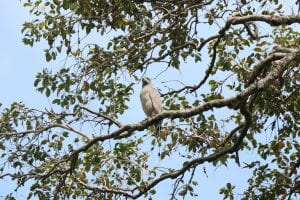
Serpent Eagle during our walk to the camp. Taken by Mathisha
The next morning we headed to the Lanka Ella falls which is a water fall in shape of Sri Lanka’s geographical area, and the water there was freezing, it was somewhere around 9 to 12 degrees Celsius. When I observed the climate of that area, I didn’t expect the water temperature to be so low, at first it was unpredictable but then it felt extremely cold. Besides the fall, the walk we did was also quite unique to me because in our walk there were many different geographical landscapes such as at first it was all bushes, and soon after tall trees and woods, and then all plain. During this walk I was lucky enough to borrow Gecko Net’s DSLR camera from Anuda and try clicking some images. At that time I applied the knowledge of using ISO in different lighting and the use of increasing shutter speed to capture any flying birds.
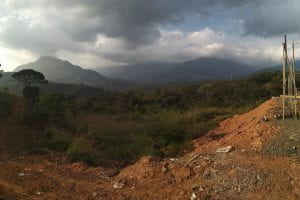
Landscape with dark weather in Haputale, taken by the author
We then headed towards Horton Plains and on our way in Haputate we did shopping as well. During the shopping I was able to learn about the local life in Sri Lanka and it’s a lot different than the life in Colombo such as small shops and lifestyle of people. Afterwards we headed to Horton Plains National Park where we stayed for the rest of the week in a dormitory. The dormitory was livable but I was more focused on the scenery and wildlife there was. I would guess that we were in some African land because of the grasslands, high wind, greenery, or somewhere in Europe due to the mountains. The temperature was cool but not as cold as in night where I needed a sleeping bag with full clothes on, but I enjoyed the cool weather. While on our way to Horton Plains, I used my phone for some photography and I got some nice clicks which can be shown below, by this I also learned the effect of having dual cameras on phones these days. One for the image and the other for the depth effect and zooming.

Local life in Haputale. Taken by the author
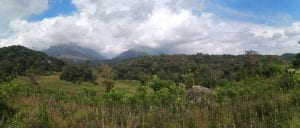
Another mountainous landscape full of clouds in Haputale, taken by the author
In Horton Plains we hiked to Kirigalpotta which is the 2nd highest peak in Sri Lanka. During our hike I saw many more bird species and learned how to use a DSLR camera. I didn’t have a DSLR so I had to use my phone however I used my peers DSLR to learn photography. I was usually focused on clicking landscapes because I liked them a lot. The views I saw were amazing, something which I can’t see from Colombo. When in Horton Plains I never realized that I would be interested in learning about ecology and environment because I’m mostly concentrated on physics, however in Horton Plains when we hiked the 3rd highest peak of Sri Lanka, Totupola Kanda, the morning sunrise was quite amazing to view because the sun was just rising, the effects it made on the sky with the lighting was very new to me as I’ve never seen something like that before and as being a landscape lover, the view of the sky with light strokes of sun rays with the mountains were very memorable.
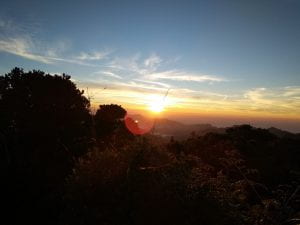
Sun rise at Totupola Kanda, 3rd highest peak in Sri Lanka, taken by the author

At the 2nd highest peak of Sri Lanka, Kirigalpotta. Taken by Mr. Lockwood
On the last day we drove to the highest peak of Sri Lanka which is Pidurutalagala. We were very lucky to not have any clouds nor rain by which the view from up there at 2524 meters was amazing. On the peak was Sri Lanka’s military force situated consisting of Sri Lankan Air Force and Army. The landscape views I got from there were incredible and specially the patterns and strokes made by the clouds. I never thought Sri Lanka can have such views and the mountainous landscape didn’t seem like Sri Lankan land. During nighttime we also did some night photography and looked at stars, I loved the photos we took of stars with the help of external lights and the stars were very beautiful and I enjoyed that night a lot.

Night photography. Taken by Mathisha
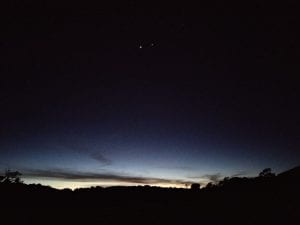
Early sunrise from the dormitory in Horton Plains. Taken by the author.
On our last day in Nuwara Eliya at Sr.Andrews, we went to Victoria Park where I got a chance to view different types of birds of Sri Lanka such as the Pied Thursh founded by Luca after a long hunt which is shown below. We also went for a frog watch where I learned about how frogs can have different breeds. We saw more than 10 different types of frog and during that time I also learned how having external flashes from both sides of an object in dark can make every detail of the object appear, as we used it for some frog photography.
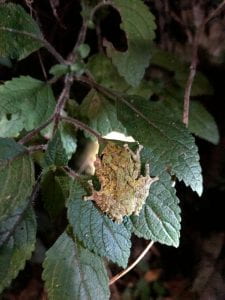
One of the rare frogs we saw in the backside of St. Andrews. Photo taken by Mr. Lockwood, lights given by author

Luca’s discovery of Pied Thrush in Victoria Park. Original picture taken by GeckoNet. This image was taken by Mr. Lockwood
During these 5 days I learned a new technical skill of using DSLR through my peer’s cameras but this will be helpful for me at school because I’m involved in many activities which require photography. I never learned environmental science however after this trip I grasped a good amount of knowledge about Sri Lankan ecology and specially it’s birds. Those 5 days were quite relaxing for me because I was away from the hot climate in Colombo and having a change of weather is always relaxing. In terms of peer bonding, I got to know more about my own classmates and was able to socialize with 10th graders which I never did before. The food at the bungalow in Horton Plains was edible however I enjoyed the meals on the last day at St. Andrews. I think as a last week without walls of my life, this was the best I had so far because of the learning I got, new technical skills of photography, and increased my fitness as well.
Landscapes of Highlands taken by the author

